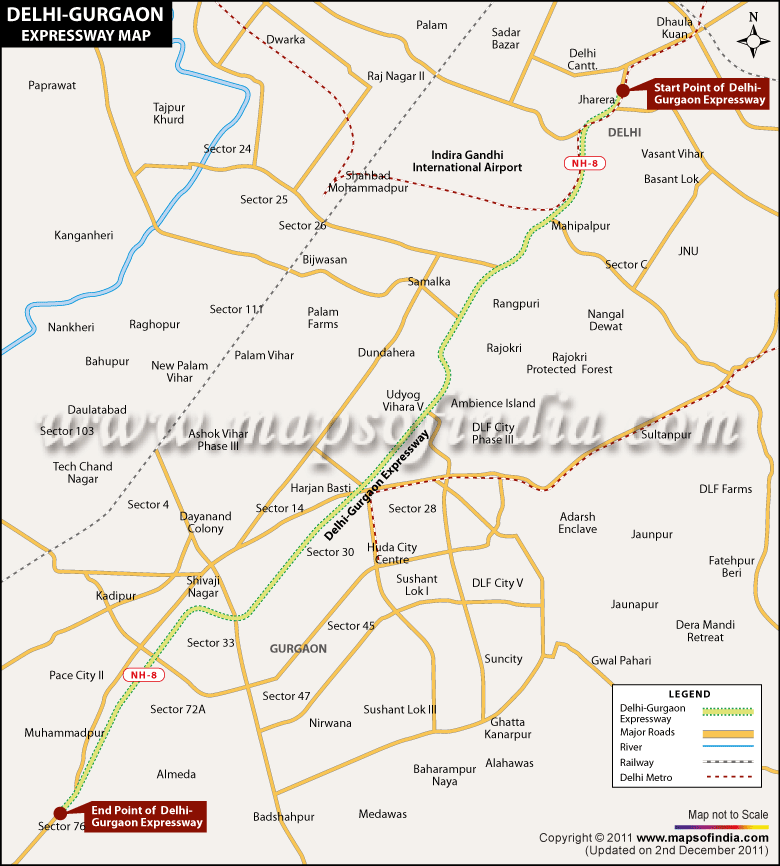As the domestic and international airports are on this route, the expressway has reduced the travelling time from the city to the airports. Moreover, Gurgaon has many multinational s and national companies operating there, as well as a large residential population so this expressway has connected this very high traffic density corridor between Delhi and Gurgaon. The traffic is specially high in the peak office hours in the morning and evening.
The 28 kilometer long elevated eight- lane expressway starts at Dhaula Kuan near Delhi cantonment in New Delhi and ends at Manesar in the outskirts of Gurgaon. It goes over eleven flyovers and over -passes. The elevated sections of the expressway are open only to fast moving vehicles which can attain a speed of 80-100 kmph. Slow moving vehicles such as three wheelers are not allowed in the toll lanes.
There are three toll plazas with multiple lanes on the expressway. There is a six-lane toll plaza at the Indira Gandhi international Airport; another one with eighteen lane toll plaza near Haldiram on the NH 8. The largest, a thirty-two lane toll plaza is at the Delhi Gurgaon border.
However, despite the number of toll plaza at the Delhi Gurgaon border, the existing toll gates are inadequate to handle the increasing traffic. In addition, there are different lanes for vehicles with smart tags, smart cards, and cash payments. Traffic jams and long queues are common at this point with vehicles often moving in the wrong lanes. Only 40% of the vehicles use the pre paid smart tag facility which ensures a non- stop fast exit through the toll gates.
Last Updated on : 06 April 2013
|
|
